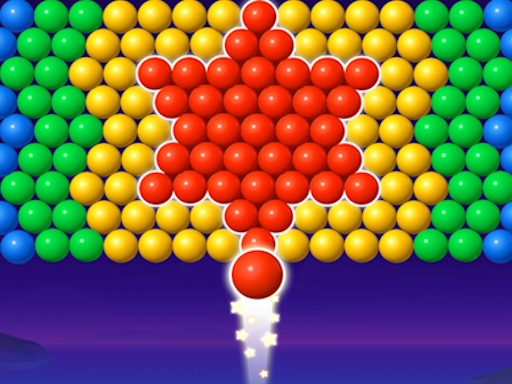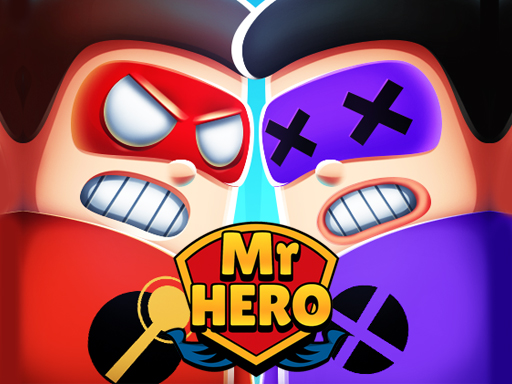Dimensional Shif
About Dimensional Shif
Okay, so you know how sometimes you stumble upon a game, completely by accident, and it just… *clicks*? Like, it wasn't on your radar, no one was really talking about it, but then you spend five minutes with it and suddenly, the rest of the world just fades away? That’s exactly what happened to me with this game, "Dimensional Shift." Honestly, I haven't been this utterly captivated by a puzzle game in ages, and I mean *ages*. I've always been drawn to games that make you think, that challenge your spatial reasoning and force you to look at things from a different angle, but this one? This one takes it to a whole new level. It's not just a puzzle; it's a mental gymnastics routine wrapped in this deceptively simple, yet incredibly elegant, isometric package.
I remember the first time I fired it up. The visuals are clean, right? Like, really crisp. You're looking down on these floating platforms, all rendered in this beautiful, almost minimalist 3D isometric style. It's not flashy, there aren't a million particle effects, but there's a certain charm to its starkness. It immediately gives you this sense of precision, you know? Like every block, every movement, has a purpose. And that's exactly what you get. You control this little character, just a simple silhouette really, and your goal seems straightforward enough: get to the purple block. But oh, my friend, that's where the simplicity ends and the genius truly begins.
The core mechanic, the absolute beating heart of Dimensional Shift, revolves around these bright yellow blocks. You see them everywhere, making up most of the pathways. You can step on them, move across them, no problem. But here's the kicker, the thing that will mess with your head in the most delightful way: the moment you *leave* a yellow block, it crumbles. It just falls away into the abyss below, gone forever. And that's not just a visual flourish; it's the entire puzzle. Because to finish a level, you don't just have to reach the purple block. Oh no, that would be too easy. You have to reach the purple block *and* ensure every single yellow block on the level has fallen. Every. Single. One.
Seriously, think about that for a second. It means every step you take is a commitment. Every path you choose is a permanent alteration to the level. It's not about finding the shortest route; it's about finding the *only* route that allows you to systematically dismantle the very ground you're walking on, all while ensuring you don't strand yourself or leave a single yellow block standing. It's like playing Jenga, but the blocks you pull out are the ones you just stepped off, and you're still trying to get to the top of the tower. The tension is palpable, even in a puzzle game. You can almost feel the weight of each decision as your little character hops from one block to the next.
What I love about games like this is how they slowly, almost imperceptibly, teach you their language. The first few levels of Dimensional Shift are gentle. They introduce the concept, let you make a few mistakes, show you the consequences. You'll take a step, watch a block fall, realize you needed that block to get back, and then sigh as you hit the restart button. And you *will* hit the restart button. A lot. But it's never frustrating in a cheap way. It's that good kind of frustration, the kind that sharpens your focus, that makes you lean closer to the screen, determined to crack the code. You start to see patterns, to anticipate the fall, to plan not just your next move, but the next five, six, seven moves.
The brilliant thing about this is how it constantly forces you to shift your perspective, both literally and figuratively. You're looking at this isometric grid, and your brain is trying to map out a 2D path, but the third dimension, the *depth*, is always there, waiting to catch you out. You might think you have a clear run, only to realize that the block you need to step on to reach the purple square is also the *last* yellow block, and you've just stepped off the one that would have allowed you to clear all the others. It's a constant dance between foresight and retrospection. You're always asking yourself, "If I step here, what does that open up? What does it close off? What does it *destroy*?"
There's something magical about those moments when a complex level, one that had you stumped for what felt like an eternity, suddenly *snaps* into place. You've been trying every permutation, restarting, pacing around your room, maybe even stepping away for a bit, and then you come back, look at the grid with fresh eyes, and boom! The whole sequence just unfolds in your mind. You see the secret path, the intricate dance of steps that will clear every yellow block and land you perfectly on that glowing purple square. That feeling, that pure, unadulterated satisfaction of watching your little character execute the perfect, pre-planned sequence, each yellow block dissolving precisely when it should, is incredibly rewarding. It’s like being a conductor of a tiny, destructive symphony.
And the game doesn't just rest on its laurels with the yellow blocks and purple goal. Oh no, it slowly introduces new elements that just layer on the complexity. Maybe there are blocks that *don't* fall, or blocks that trigger other events, or even sections that require you to move blocks around. I mean, the way the designers weave these new mechanics in, so subtly at first, then combining them in mind-bending ways, is just phenomenal. You'll find yourself marveling at the sheer cleverness of it all. It’s never about speed; it’s always about precision and planning. You can almost feel your brain stretching, expanding, as you tackle each new challenge.
In my experience, the best moments come when you’re so absorbed that you completely lose track of time. I remember one evening, I started playing "just for a bit" after dinner. The next thing I knew, the clock on my wall was showing 2 AM, and I'd solved about fifteen levels in a row, each one more intricate than the last. My shoulders were a little tense, my eyes probably a bit dry, but my mind felt incredibly sharp, buzzing with the afterglow of pure problem-solving. It’s that kind of game. It pulls you into its world of floating blocks and impossible paths, and it doesn't let go until you've wrung every last drop of satisfaction from its challenges.
What's fascinating is how something so visually simple can evoke such a strong sense of accomplishment. There's no grand narrative, no dramatic cutscenes, just you, a little character, and a grid of blocks. But the story is in your head, in the struggle and the triumph of each puzzle. It's about outsmarting the game, outsmarting yourself, really. This makes me wonder about the infinite possibilities of such a clean design – how much depth can be created with so few elements? It's a testament to brilliant game design, honestly.
So, if you're looking for something that will genuinely challenge your brain, that will give you that glorious "aha!" moment over and over again, and that will make you feel like a certified genius when you finally clear a particularly stubborn level, you *have* to check out Dimensional Shift. It's not just a game; it's an exercise in pure, unadulterated, satisfying logic. Trust me on this one. You'll thank me later, probably after you've spent three hours trying to figure out how to get that last yellow block to fall. It's that good.
I remember the first time I fired it up. The visuals are clean, right? Like, really crisp. You're looking down on these floating platforms, all rendered in this beautiful, almost minimalist 3D isometric style. It's not flashy, there aren't a million particle effects, but there's a certain charm to its starkness. It immediately gives you this sense of precision, you know? Like every block, every movement, has a purpose. And that's exactly what you get. You control this little character, just a simple silhouette really, and your goal seems straightforward enough: get to the purple block. But oh, my friend, that's where the simplicity ends and the genius truly begins.
The core mechanic, the absolute beating heart of Dimensional Shift, revolves around these bright yellow blocks. You see them everywhere, making up most of the pathways. You can step on them, move across them, no problem. But here's the kicker, the thing that will mess with your head in the most delightful way: the moment you *leave* a yellow block, it crumbles. It just falls away into the abyss below, gone forever. And that's not just a visual flourish; it's the entire puzzle. Because to finish a level, you don't just have to reach the purple block. Oh no, that would be too easy. You have to reach the purple block *and* ensure every single yellow block on the level has fallen. Every. Single. One.
Seriously, think about that for a second. It means every step you take is a commitment. Every path you choose is a permanent alteration to the level. It's not about finding the shortest route; it's about finding the *only* route that allows you to systematically dismantle the very ground you're walking on, all while ensuring you don't strand yourself or leave a single yellow block standing. It's like playing Jenga, but the blocks you pull out are the ones you just stepped off, and you're still trying to get to the top of the tower. The tension is palpable, even in a puzzle game. You can almost feel the weight of each decision as your little character hops from one block to the next.
What I love about games like this is how they slowly, almost imperceptibly, teach you their language. The first few levels of Dimensional Shift are gentle. They introduce the concept, let you make a few mistakes, show you the consequences. You'll take a step, watch a block fall, realize you needed that block to get back, and then sigh as you hit the restart button. And you *will* hit the restart button. A lot. But it's never frustrating in a cheap way. It's that good kind of frustration, the kind that sharpens your focus, that makes you lean closer to the screen, determined to crack the code. You start to see patterns, to anticipate the fall, to plan not just your next move, but the next five, six, seven moves.
The brilliant thing about this is how it constantly forces you to shift your perspective, both literally and figuratively. You're looking at this isometric grid, and your brain is trying to map out a 2D path, but the third dimension, the *depth*, is always there, waiting to catch you out. You might think you have a clear run, only to realize that the block you need to step on to reach the purple square is also the *last* yellow block, and you've just stepped off the one that would have allowed you to clear all the others. It's a constant dance between foresight and retrospection. You're always asking yourself, "If I step here, what does that open up? What does it close off? What does it *destroy*?"
There's something magical about those moments when a complex level, one that had you stumped for what felt like an eternity, suddenly *snaps* into place. You've been trying every permutation, restarting, pacing around your room, maybe even stepping away for a bit, and then you come back, look at the grid with fresh eyes, and boom! The whole sequence just unfolds in your mind. You see the secret path, the intricate dance of steps that will clear every yellow block and land you perfectly on that glowing purple square. That feeling, that pure, unadulterated satisfaction of watching your little character execute the perfect, pre-planned sequence, each yellow block dissolving precisely when it should, is incredibly rewarding. It’s like being a conductor of a tiny, destructive symphony.
And the game doesn't just rest on its laurels with the yellow blocks and purple goal. Oh no, it slowly introduces new elements that just layer on the complexity. Maybe there are blocks that *don't* fall, or blocks that trigger other events, or even sections that require you to move blocks around. I mean, the way the designers weave these new mechanics in, so subtly at first, then combining them in mind-bending ways, is just phenomenal. You'll find yourself marveling at the sheer cleverness of it all. It’s never about speed; it’s always about precision and planning. You can almost feel your brain stretching, expanding, as you tackle each new challenge.
In my experience, the best moments come when you’re so absorbed that you completely lose track of time. I remember one evening, I started playing "just for a bit" after dinner. The next thing I knew, the clock on my wall was showing 2 AM, and I'd solved about fifteen levels in a row, each one more intricate than the last. My shoulders were a little tense, my eyes probably a bit dry, but my mind felt incredibly sharp, buzzing with the afterglow of pure problem-solving. It’s that kind of game. It pulls you into its world of floating blocks and impossible paths, and it doesn't let go until you've wrung every last drop of satisfaction from its challenges.
What's fascinating is how something so visually simple can evoke such a strong sense of accomplishment. There's no grand narrative, no dramatic cutscenes, just you, a little character, and a grid of blocks. But the story is in your head, in the struggle and the triumph of each puzzle. It's about outsmarting the game, outsmarting yourself, really. This makes me wonder about the infinite possibilities of such a clean design – how much depth can be created with so few elements? It's a testament to brilliant game design, honestly.
So, if you're looking for something that will genuinely challenge your brain, that will give you that glorious "aha!" moment over and over again, and that will make you feel like a certified genius when you finally clear a particularly stubborn level, you *have* to check out Dimensional Shift. It's not just a game; it's an exercise in pure, unadulterated, satisfying logic. Trust me on this one. You'll thank me later, probably after you've spent three hours trying to figure out how to get that last yellow block to fall. It's that good.
Enjoy playing Dimensional Shif online for free on Colosm. This Puzzle game offers amazing gameplay and stunning graphics. No downloads required, play directly in your browser!
How to Play
Mouse click or tap or swipe to play





Comments
This game is awesome! I love the graphics and gameplay.
One of the best games I've played recently. Highly recommended!